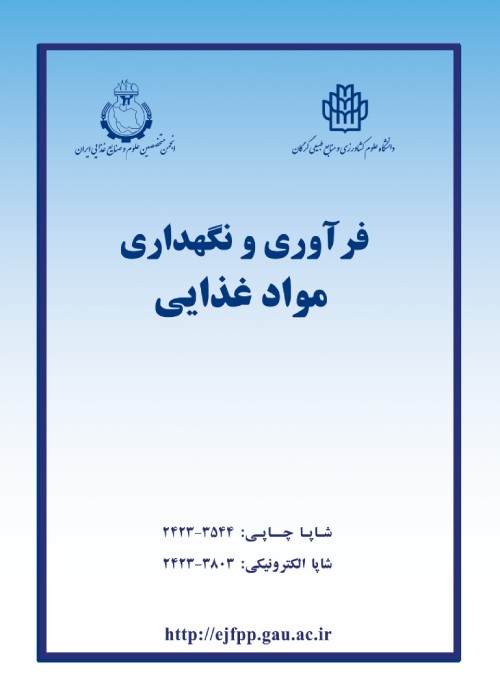Effect of Hydrolysis Intensity on Functional Properties of Protein Hydrolysate from ponyfish (Leiognathus bindus
Author(s):
Article Type:
Research/Original Article (دارای رتبه معتبر)
Abstract:
Background and objectives
Ponyfish (Leiognathus bindus) includes 54.77% of by catch in the Mahshahr creeks that has no commercial value due to its small size. So the production of value-added products, such as protein hydrolysates with nutritional value could pave the way for full use of this species. By applying enzyme technology for protein recovery in fish processing, it may be possible to produce a broad spectrum of food ingredients or industrial products for a wide range of applications. Use of proteolytic enzymes is an interesting technique for improving the functional properties of food proteins, without lossing their nutritional value. The functional properties of fish protein hydrolysate are important, particularly if they are used as ingredients in human food. Among the functional properties of proteins and hydrolysed proteins, solubility is the most important characteristic which effects other functional properties such as emulsion and foam formation. Enzymatic hydrolysis of fish proteins generates a mixture of free amino acids and oligopeptides, increases the number of polar groups and the solubility of the hydrolysate, and therefore modifies functional characteristics of the proteins, improving their functional quality and bioavailability. The aim of this study was to evaluate the functional properties of fish protein hydrolysate from ponyfish.
Materials and methods
Ponyfish was hydrolysed using 1% Alcalase during 1, 2, 3, 4 hours. and their evaluated functional properties Were evaluated. The protein hydrolysate solubility in the pH range of 3-9 and emulsifying and foaming properties in concentrations 2.5, 5, 10 mg/ml were studied.
Results
Result indicated that the highest rate of hydrolysis was 28.06%, which obtained after 4 hour. The Solubility value were above 90% in the pH range 3-9. The solubility increased at all hydrolysis times by changing the pH of acidic to the alkaline (p˂0.05). Emulsifying activity index (EAI) and emulsifying stability index (ESI) decreased by increasing hydrolysis time and protein concentration (p˂0.05). At the constsnt concentration of hydrolysate used, slight decreases in foam expansion and foam stability were observed when DH of hydrolysate increased (p<0.05). However, at the same DH, foam expansion and foam stability of hydrolysate showed a significant increase by increasing concentration (p<0.05).
Conclusion
Results in the present study showed that hydrolysates produced from ponyfish can be used as food ingredients or additives to impart a increase consumer desire characteristic to food products or increase food storage time. Also use it is useful as emulsifying, foaming agents, in sausages, mayonnaise, salad dressings, beverages, creams, etc., all these in a broad pH rangeKeywords:
Language:
Persian
Published:
Electronic Journal of Food Processing and Preservation, Volume:10 Issue: 2, 2018
Pages:
137 to 149
magiran.com/p1937905
دانلود و مطالعه متن این مقاله با یکی از روشهای زیر امکان پذیر است:
اشتراک شخصی
با عضویت و پرداخت آنلاین حق اشتراک یکساله به مبلغ 1,390,000ريال میتوانید 70 عنوان مطلب دانلود کنید!
اشتراک سازمانی
به کتابخانه دانشگاه یا محل کار خود پیشنهاد کنید تا اشتراک سازمانی این پایگاه را برای دسترسی نامحدود همه کاربران به متن مطالب تهیه نمایند!
توجه!
- حق عضویت دریافتی صرف حمایت از نشریات عضو و نگهداری، تکمیل و توسعه مگیران میشود.
- پرداخت حق اشتراک و دانلود مقالات اجازه بازنشر آن در سایر رسانههای چاپی و دیجیتال را به کاربر نمیدهد.
In order to view content subscription is required
Personal subscription
Subscribe magiran.com for 70 € euros via PayPal and download 70 articles during a year.
Organization subscription
Please contact us to subscribe your university or library for unlimited access!


